梯度下降法的基本思想可以类比为一个下山的过程。假设这样一个场景:一个人被困在山上,需要从山上下来(i.e. 找到山的最低点,也就是山谷)。但此时山上的浓雾很大,导致可视度很低。因此,下山的路径就无法确定,他必须利用自己周围的信息去找到下山的路径。这个时候,他就可以利用梯度下降算法来帮助自己下山。具体来说就是,以他当前的所处的位置为基准,寻找这个位置最陡峭的地方,然后朝着山的高度下降的地方走,同理,如果我们的目标是上山,也就是爬到山顶,那么此时应该是朝着最陡峭的方向往上走。然后每走一段距离,都反复采用同一个方法,最后就能成功的抵达山谷
作者:六尺帐篷
链接:https://www.jianshu.com/p/c7e642877b0e
來源:简书
简书著作权归作者所有,任何形式的转载都请联系作者获得授权并注明出处。
五、梯度下降法中的向量化和数据标准化
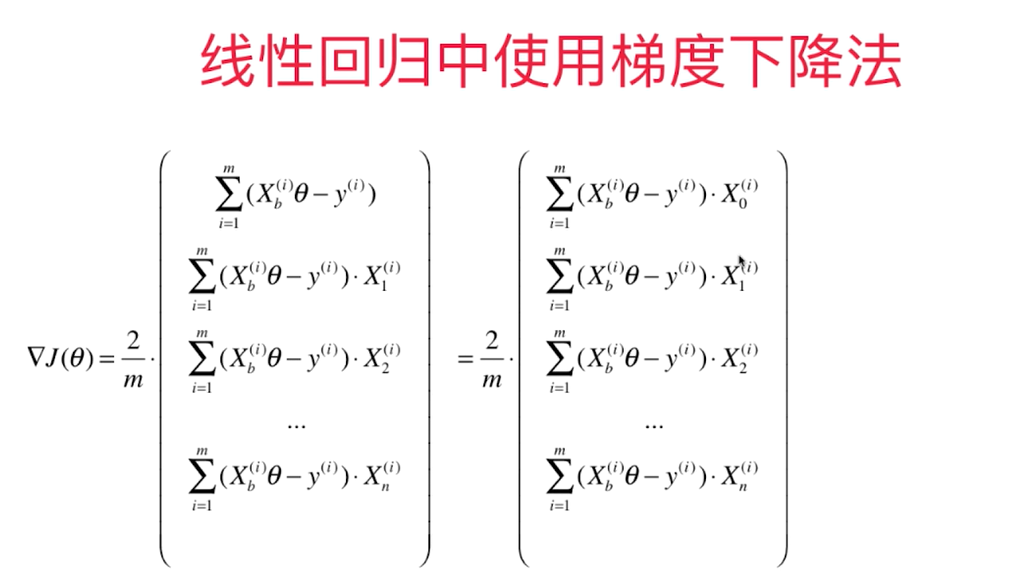
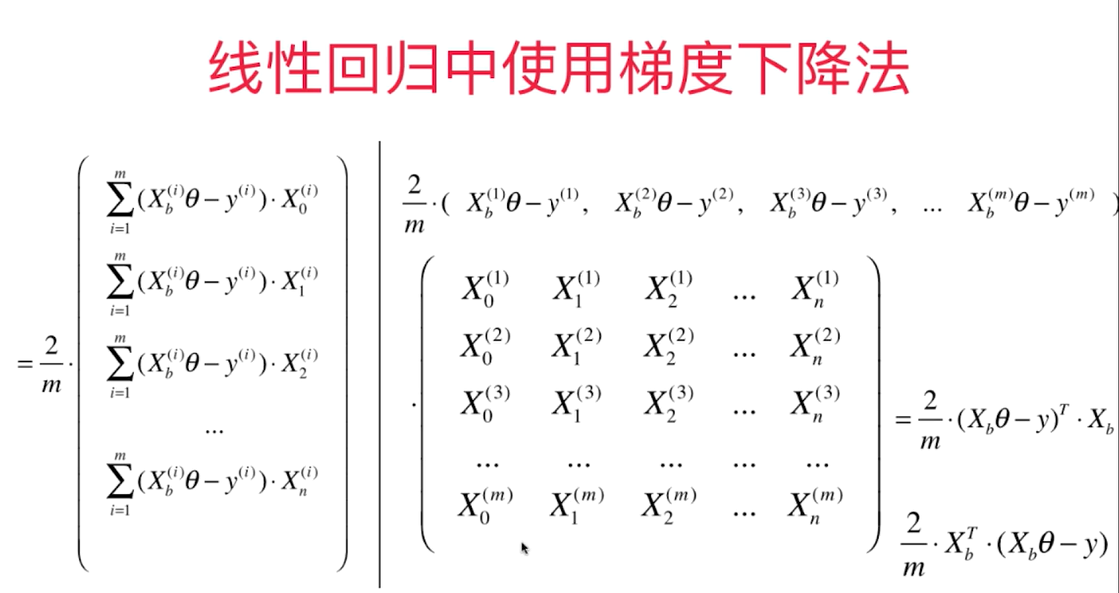
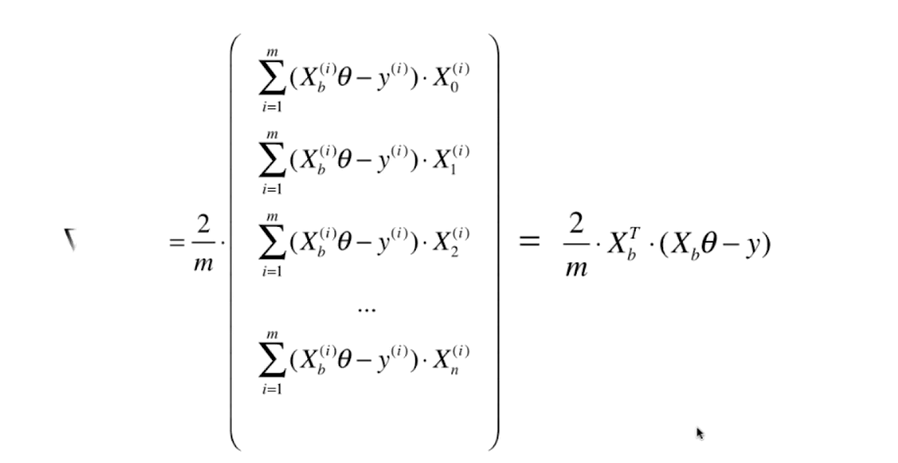
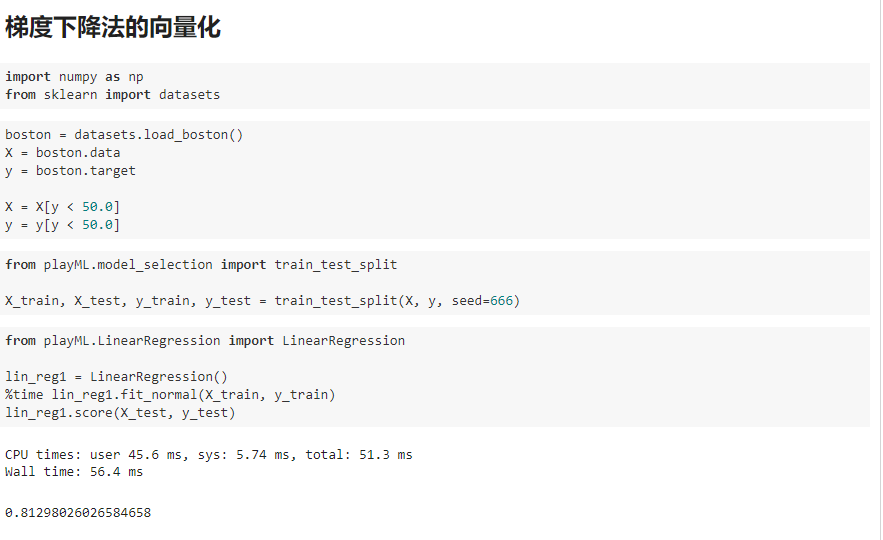
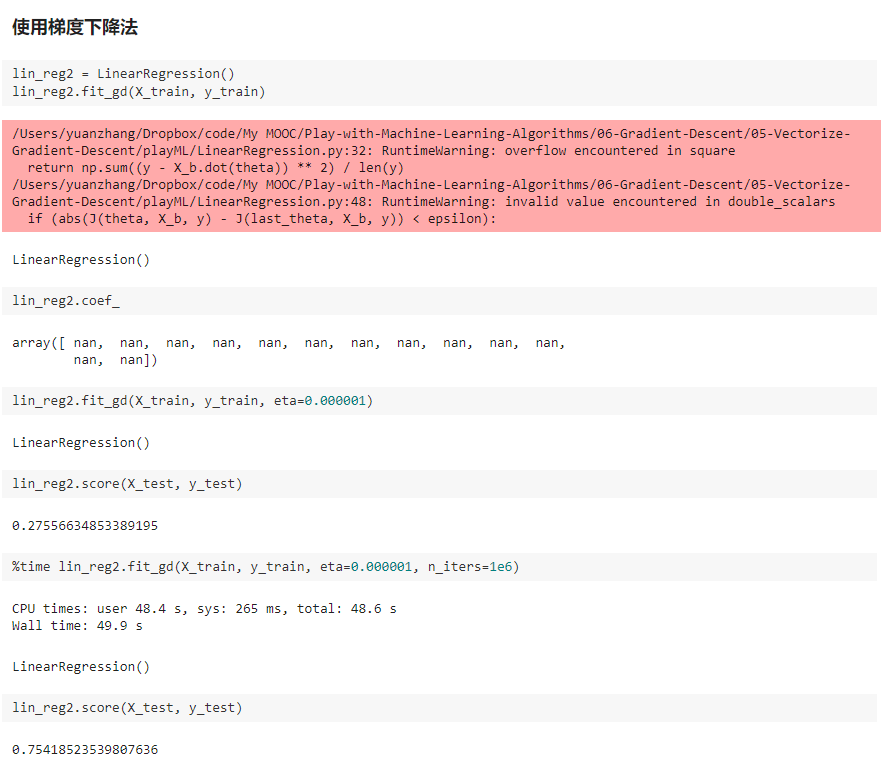

六、随机梯度下降法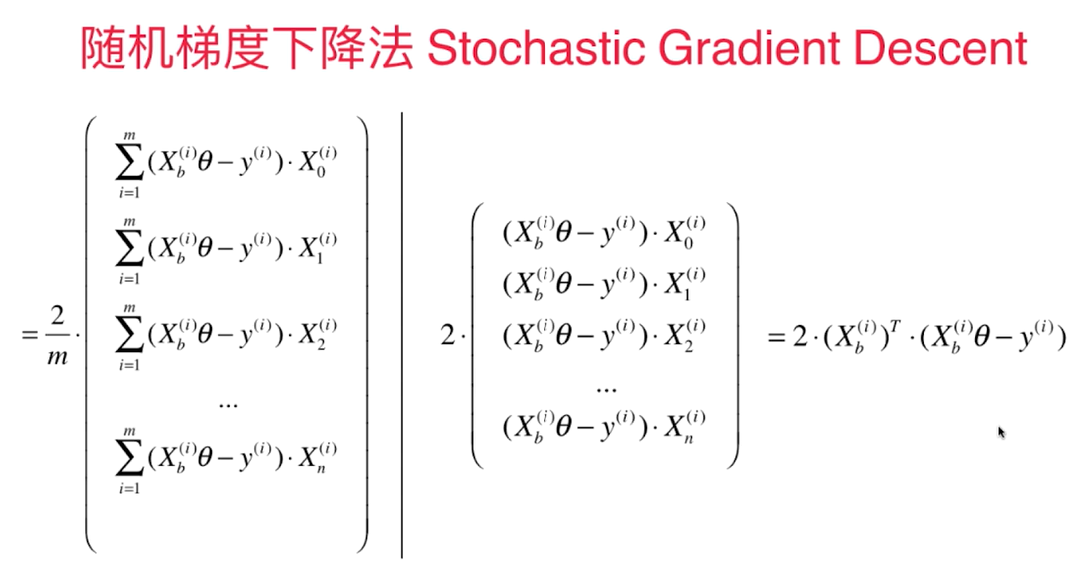
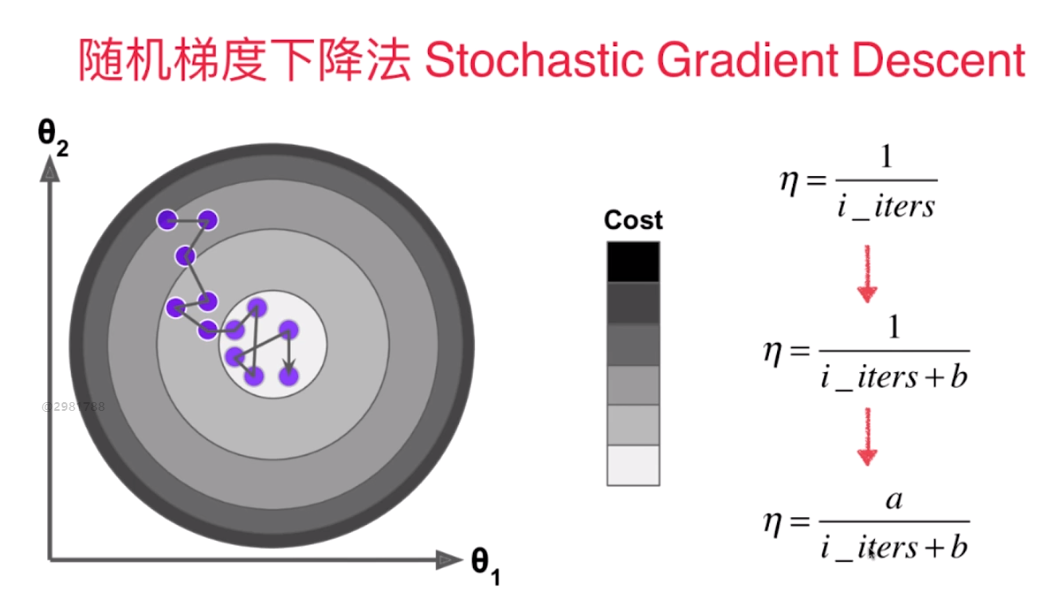

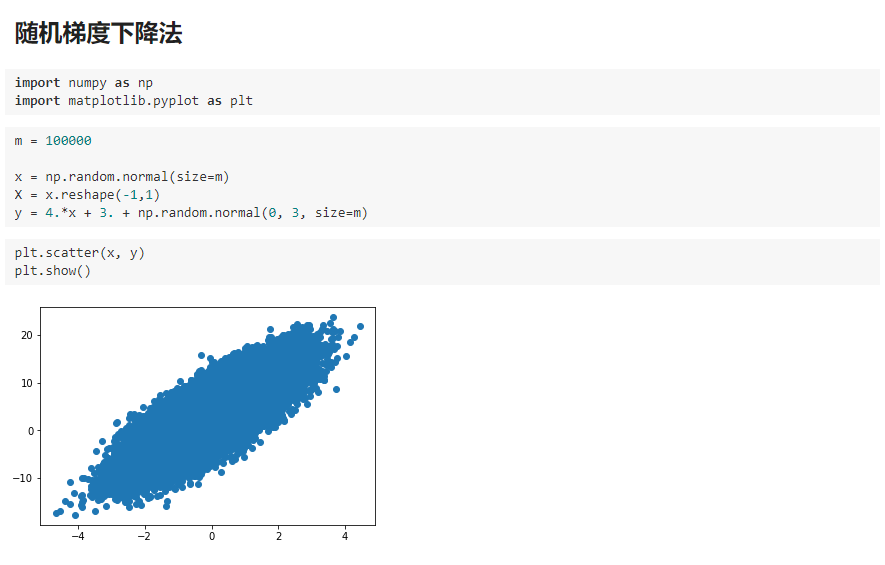
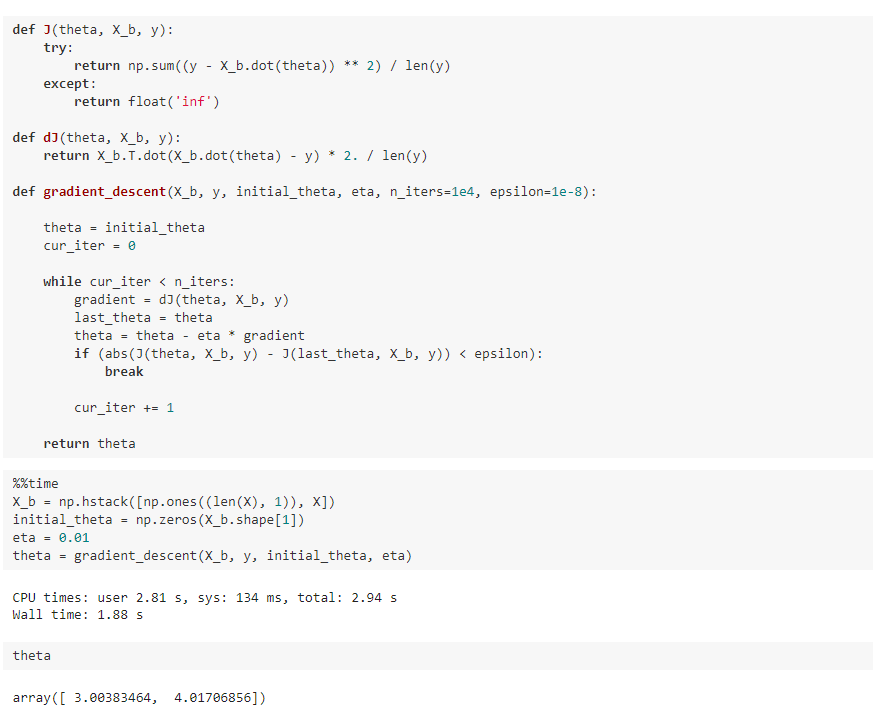
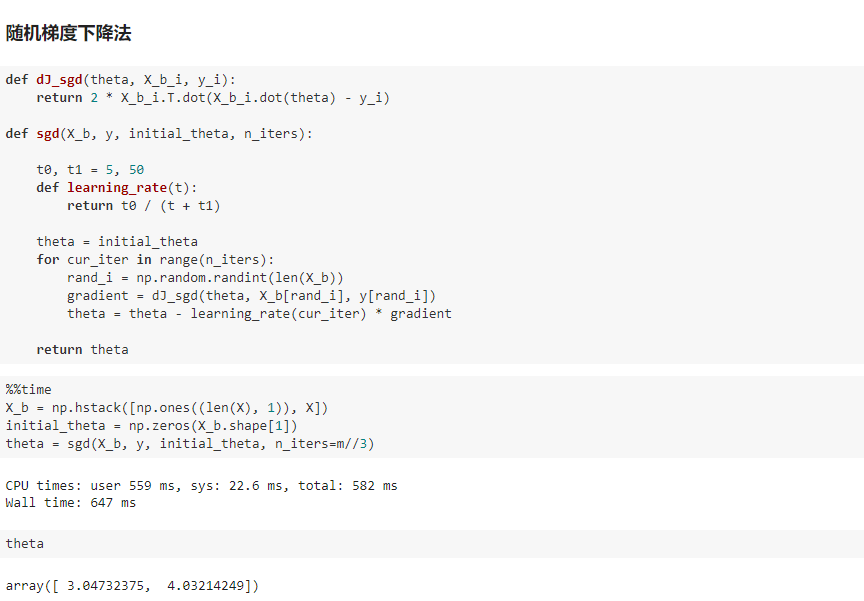
七、scikit-learn中的随机梯度下降法
LinearRegression.py
import numpy as np from .metrics import r2_score class LinearRegression: def __init__(self): """初始化Linear Regression模型""" self.coef_ = None self.intercept_ = None self._theta = None def fit_normal(self, X_train, y_train): """根据训练数据集X_train, y_train训练Linear Regression模型""" assert X_train.shape[0] == y_train.shape[0], "the size of X_train must be equal to the size of y_train" X_b = np.hstack([np.ones((len(X_train), 1)), X_train]) self._theta = np.linalg.inv(X_b.T.dot(X_b)).dot(X_b.T).dot(y_train) self.intercept_ = self._theta[0] self.coef_ = self._theta[1:] return self def fit_bgd(self, X_train, y_train, eta=0.01, n_iters=1e4): """根据训练数据集X_train, y_train, 使用梯度下降法训练Linear Regression模型""" assert X_train.shape[0] == y_train.shape[0], "the size of X_train must be equal to the size of y_train" def J(theta, X_b, y): try: return np.sum((y - X_b.dot(theta)) ** 2) / len(y) except: return float('inf') def dJ(theta, X_b, y): return X_b.T.dot(X_b.dot(theta) - y) * 2. / len(y) def gradient_descent(X_b, y, initial_theta, eta, n_iters=1e4, epsilon=1e-8): theta = initial_theta cur_iter = 0 while cur_iter < n_iters: gradient = dJ(theta, X_b, y) last_theta = theta theta = theta - eta * gradient if (abs(J(theta, X_b, y) - J(last_theta, X_b, y)) < epsilon): break cur_iter += 1 return theta X_b = np.hstack([np.ones((len(X_train), 1)), X_train]) initial_theta = np.zeros(X_b.shape[1]) self._theta = gradient_descent(X_b, y_train, initial_theta, eta, n_iters) self.intercept_ = self._theta[0] self.coef_ = self._theta[1:] return self def fit_sgd(self, X_train, y_train, n_iters=50, t0=5, t1=50): """根据训练数据集X_train, y_train, 使用梯度下降法训练Linear Regression模型""" assert X_train.shape[0] == y_train.shape[0], "the size of X_train must be equal to the size of y_train" assert n_iters >= 1 def dJ_sgd(theta, X_b_i, y_i): return X_b_i * (X_b_i.dot(theta) - y_i) * 2. def sgd(X_b, y, initial_theta, n_iters=5, t0=5, t1=50): def learning_rate(t): return t0 / (t + t1) theta = initial_theta m = len(X_b) for i_iter in range(n_iters): indexes = np.random.permutation(m) X_b_new = X_b[indexes,:] y_new = y[indexes] for i in range(m): gradient = dJ_sgd(theta, X_b_new[i], y_new[i]) theta = theta - learning_rate(i_iter * m + i) * gradient return theta X_b = np.hstack([np.ones((len(X_train), 1)), X_train]) initial_theta = np.random.randn(X_b.shape[1]) self._theta = sgd(X_b, y_train, initial_theta, n_iters, t0, t1) self.intercept_ = self._theta[0] self.coef_ = self._theta[1:] return self def predict(self, X_predict): """给定待预测数据集X_predict,返回表示X_predict的结果向量""" assert self.intercept_ is not None and self.coef_ is not None, "must fit before predict!" assert X_predict.shape[1] == len(self.coef_), "the feature number of X_predict must be equal to X_train" X_b = np.hstack([np.ones((len(X_predict), 1)), X_predict]) return X_b.dot(self._theta) def score(self, X_test, y_test): """根据测试数据集 X_test 和 y_test 确定当前模型的准确度""" y_predict = self.predict(X_test) return r2_score(y_test, y_predict) def __repr__(self): return "LinearRegression()"
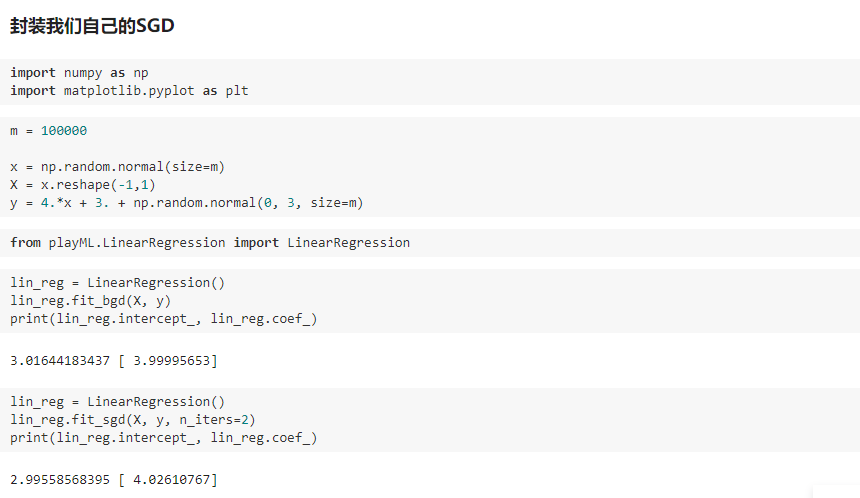
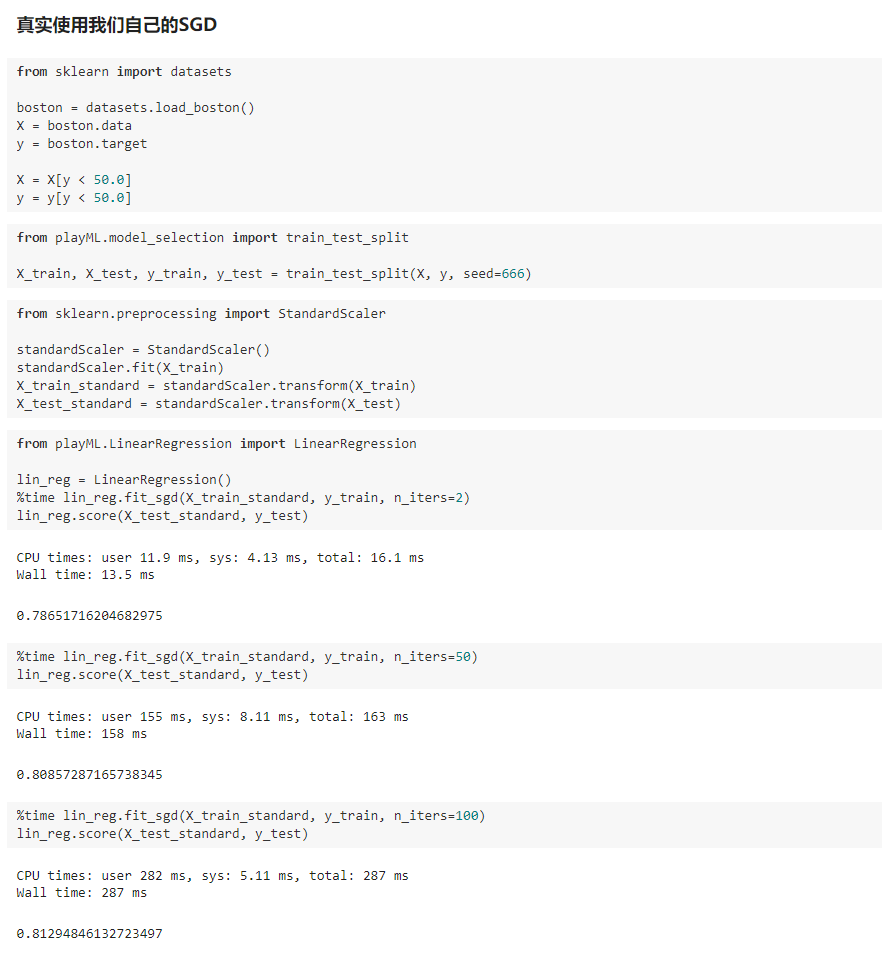
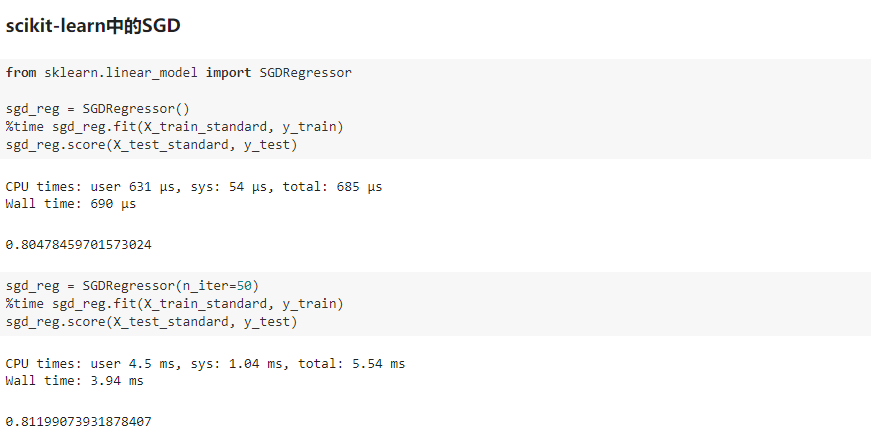
八、如何确定梯度计算的准确性?调试梯度下降法
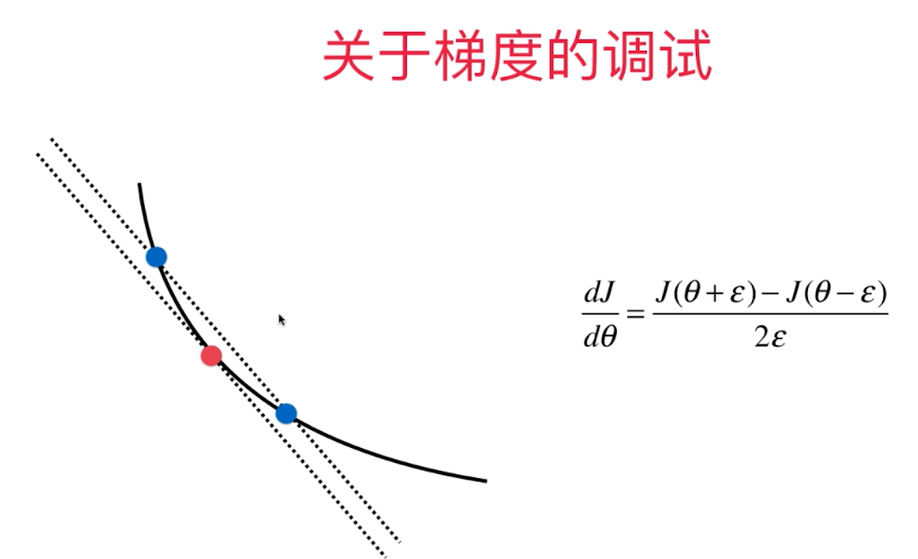

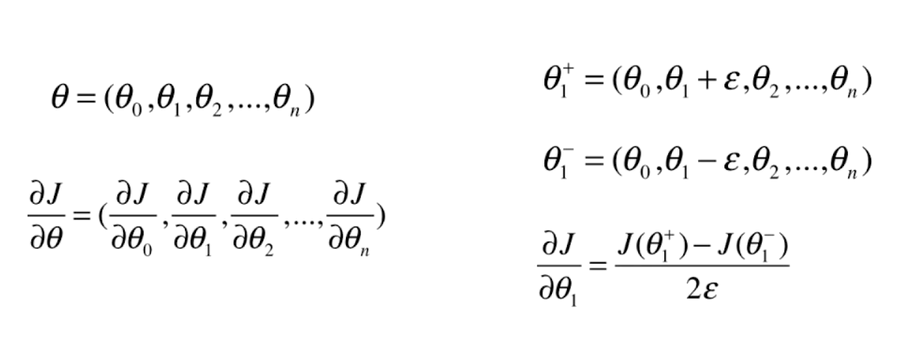

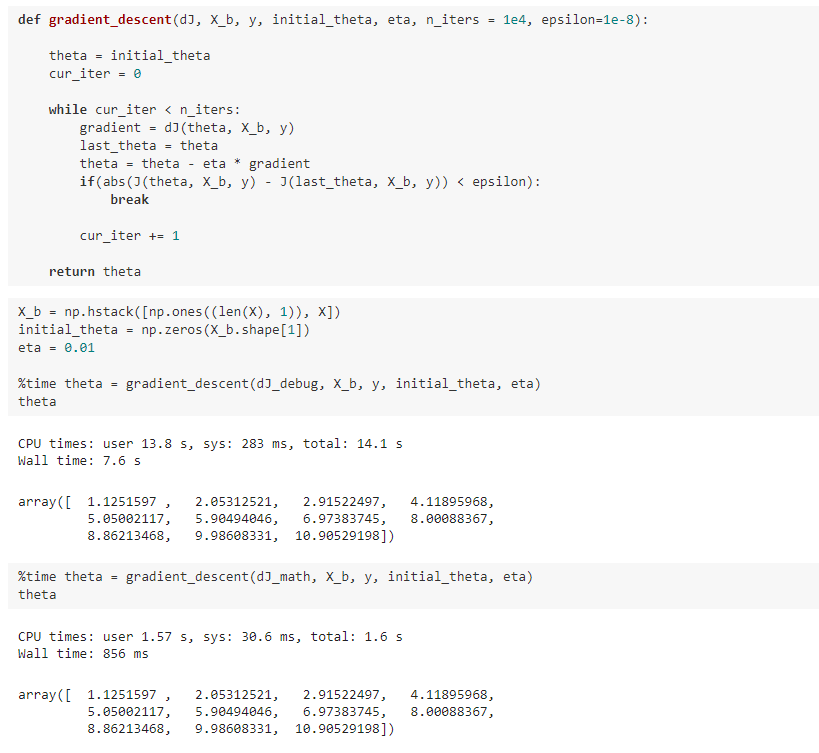
九、有关梯度下降法的更多深入讨论


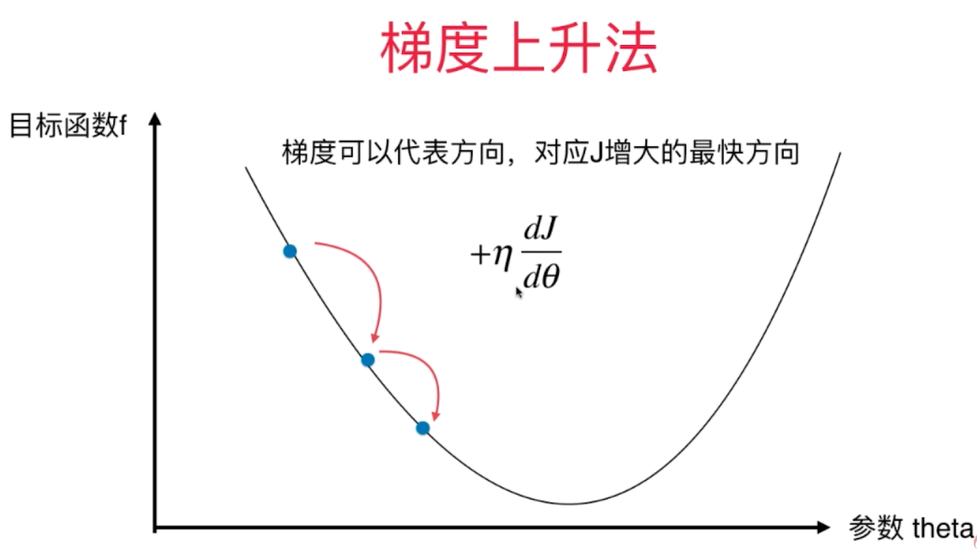
我写的文章只是我自己对bobo老师讲课内容的理解和整理,也只是我自己的弊见。bobo老师的课 是慕课网出品的。欢迎大家一起学习。